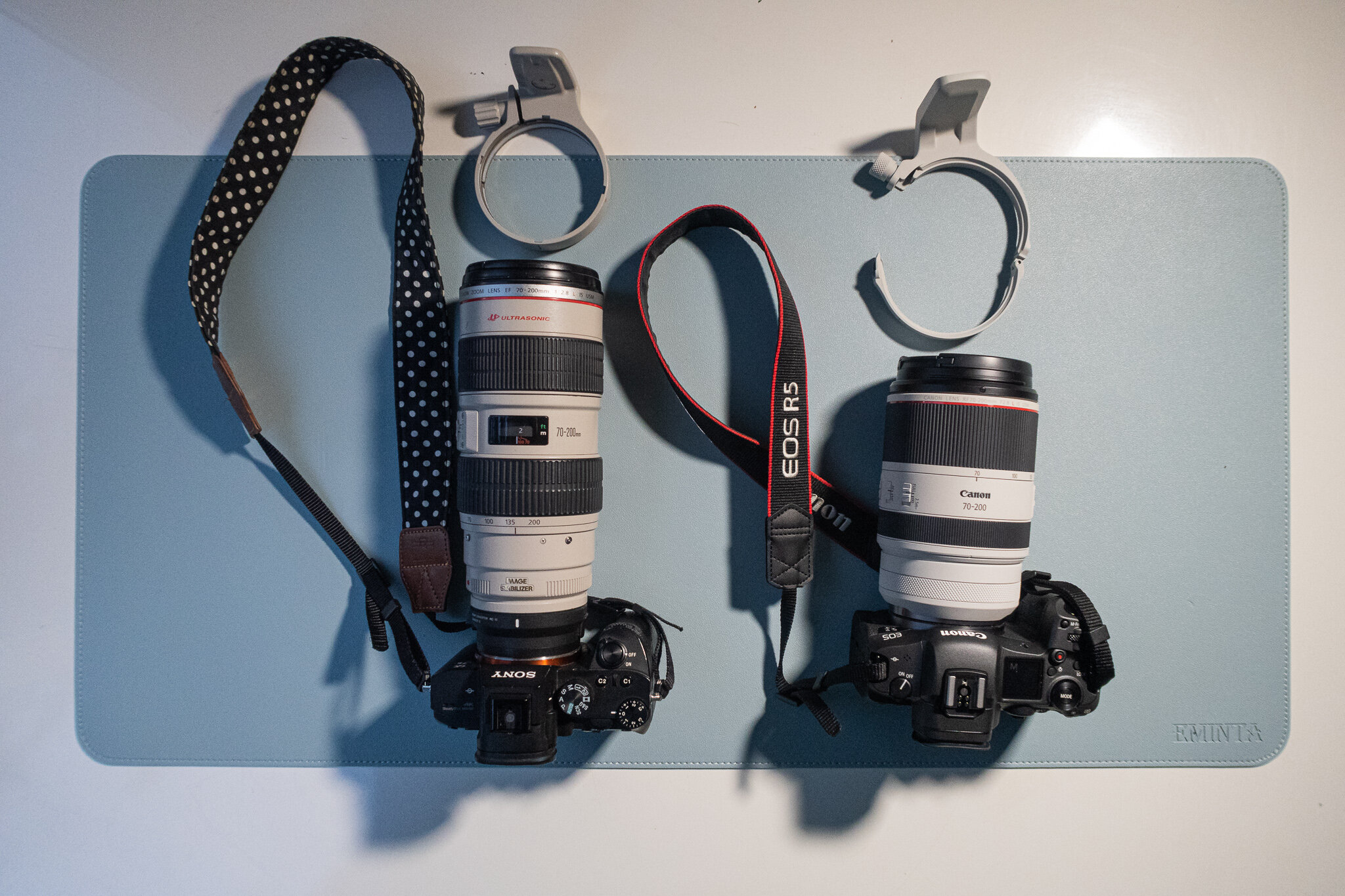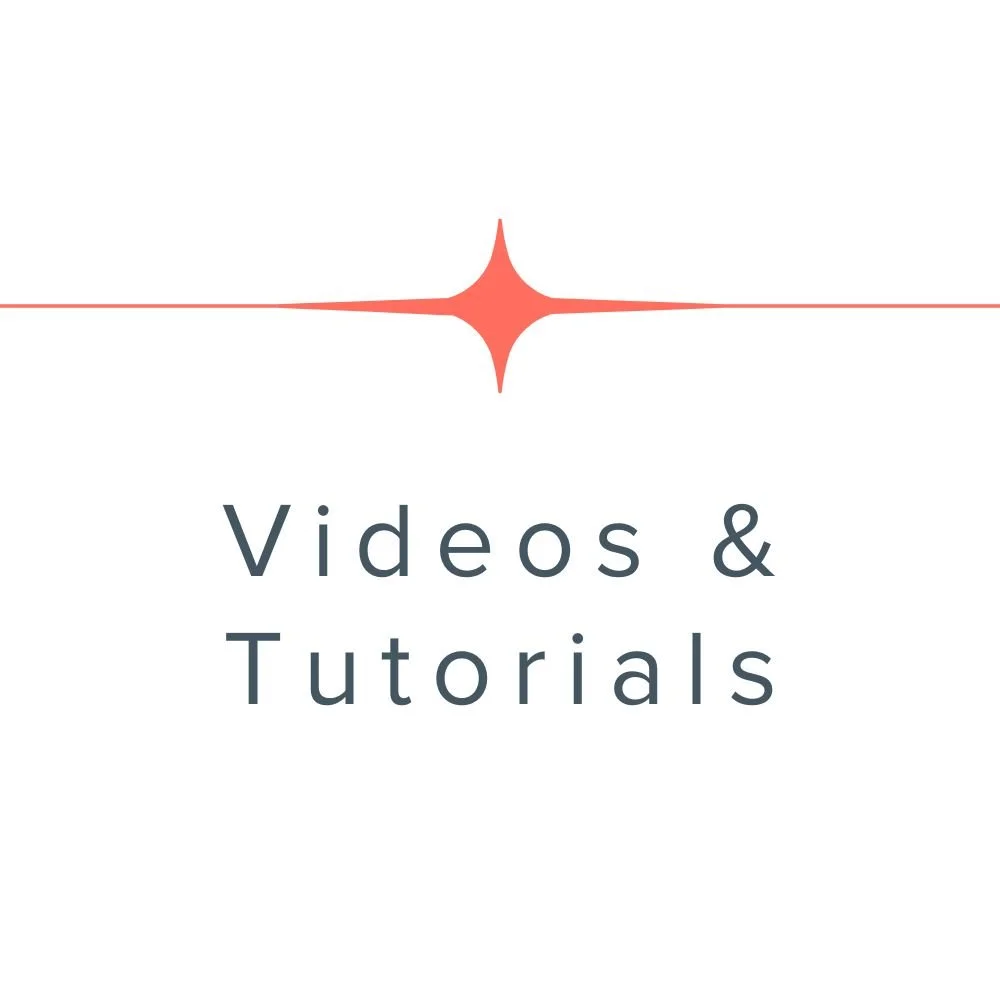Tip 2 - how to choose the right lens
In my last tip, I mentioned “camera doesn’t matter”. Does that mean equipment doesn’t matter at all? Of course no. First and foremost, I’d still like to emphasize you can take great photos with any camera equipment. However, with quality skills, better equipment gives you more chance and consistency to create better photos.
Assume you have been using smart phones, and would like to venture into the mirrorless or DSLR world. You spend a lot of time trying to figure out the first camera. Let me share with you a big secret:
Part of my lens collection
An entry level Camera plus a quality lens will make much more difference than a high end camera with a low end lens.
So don’t just spend all your time on searching the right camera. Get a good lens!
what is a good lens?
Generally, a lens with smaller f-stop value (such as f2.8 or smaller) allows more light into the camera at its wider aperture. This allows you to:
👉capture images in lower light condition with faster shutter speed. Therefore these lenses are also called fast lenses.
👉have shallower depth of field that can better separate your subject from foreground or background. This is particularly appealing for portrait photography.
The most important number you need to look at when purchasing a lens is the smallest f-stop value - usually the smaller the number (eg. f2.8 or below), the better the lens.
I’d say f2.8 is a pretty good indicator of a quality zoom lens (up to 200mm); while f1.8 or below is pretty good indicator of a quality prime lens (which I’ll detail later).
The downside of fast lenses is the price. For example, a Canon 24-70mm, f2.8 lens is double the price of Canon 24-70, f4.0.
on the lookout for a perfect lens for your Mirrorless or DSLR camera but don’t know what to buy? check Out My free Video Guide
Mirrorless Camera Ultimate Buying Guide
〰️
Mirrorless Camera Ultimate Buying Guide 〰️
What is the right lens for you then?
It’s all about what you want to photograph. Go through these 4 steps to make a decision.
1. Decide the zoom range based on what you want to photograph
👉If you are a parent with babies or pets, and want to capture everyday life around your house and tight spaces, lens covering 24-35mm zoom range would be more appropriate. Watch the following video if you are starting out and just want to have a great all-purpose lens to start with.
👉If you are into landscape, you might want to look into 16-35mm zoom range or even wider.
👉If you are into street photography or general travel photography, perhaps mid-zoom range 35-70mm.
👉If you are into outdoor portrait, perhaps a telephoto lens with 70-200mm zoom range.
Watch the above video and learn why 70-200mm telephoto lens has been my favorite outdoor lens for the past 15+ years. It’s not what I’d suggest for beginners, but down the road if you decide to invest further, this would be my top 2nd lens suggestion. It will be a game-changer for your photo quality.
👉If you are into wild animals, then something like 400mm or above. The lens is typically bigger and heavier as the zoom range goes up.
Caveat:
There are some lenses that have a huge zoom range, eg. 18-200mm. Often these lenses are inexpensive. Sounds too good to be true, right? These lenses typically are not fast lenses, and come at a cost in terms of image quality. If you photograph people most, and want sharp image, I’d suggest staying away from these lenses.
Check out my favorite lenses & sample photos (as a travel mom)
~ Sample Photos From My Favorite Lenses
~ Sample Photos From My Favorite Lenses
2. Decide if you want a fast lens
I would highly suggest you put your most important investment in this basket when deciding on a lens, as it is most relevant to your image quality.
A fast lens refers to a camera lens with a wide maximum aperture, typically f/2.8 or larger (e.g., f/2.0, f/1.8, or f/1.4). The term "fast" comes from the lens's ability to allow more light to reach the camera sensor, enabling faster shutter speeds in low-light conditions.
👉 A 50mm f/1.8 lens is considered fast because of its wide aperture.
👉A 24-70mm f/2.8 zoom lens is also considered fast, especially for zoom lenses.
Notice fast lenses have a fixed wide aperture. On the lens, you will only see one f stop number, instead of a f-stop range, such as f2.8-4.5.
Fast lenses are particularly useful to photograph people, especially if you are dealing with young kids or pets who move around constantly. You often deal with split second photo opportunities. What’s more, if you often photograph at home, you are dealing with low light. If you don’t have a fast lens, you might get blurry images easily (more on this topic in settings and techniques chapter)
Of course fast lens will be useful if you are interested in photographing landscape in low light settings during sunrise and sunset. However landscape photographers do not have to worry about hand shake and slower shutter if they use a tripod so fast lens is a high plus not a must. Of course, landscape photographers into astrophotography will still prefer fast lenses, but that’s a different topic we can cover in the future.
3. Decide on Prime vs Zoom
This decision is based on two considerations.
👉 size and weight
Generally speaking, zoom lenses are bigger and heavier than prime lenses. Among the zoom lenses, the longer the zoom range, the bulkier and heavier the lens.
If you care about the size and weight of your equipment, the total size and weight of your camera body and lens is what really matters. The size and weight of different camera bodies might differ less than those between lenses. In another word, lens choices matter more when it comes to total size and weight.
If size and weight matter to you, prime lens with fixed zoom is a great choice. In addition to the size / weight benefit, many prime lenses are fast lenses and produce sharper images compared to zoom lenses at similar zoom range. They are great for any parents with newborn or babies, or food photographers who photograph often in indoor or low light settings. Some portrait and wedding photographers prefer prime lenses over zoom lenses for this reason as well, especially in low light scenes such as in the church or restaurant. 24mm, 35mm, 50mm prime lenses are great choices for indoor scenarios and 85mm, 105mm, 135mm is great for outdoor scenarios.
Left image: 24-70mm zoom lens; Right image: 55mm prime lens
👉 convenience
While zoom lenses clearly lose advantage to prime lenses in terms of size and weight, but they can zoom.
If you often photograph moving subjects, such as toddlers, energetic kids, pets or wild animals, zoom lenses allow you to adjust your composition much faster than prime lenses.
If you photograph landscape, zoom lenses also help you adjust your composition more easily. When you are on top of a mountain or in a wide nature scene, using a prime lens to move forward and backward will not change your composition too much. In fact, sometimes you don’t have much space to move around, for example on a cliff or in front of a waterfall.
As for travelers, you want to not only minimize the bulkiness and weight of your total gear, but also avoid the complication of changing lenses often. One zoom lens is definitely more convenient than having to switch between several prime lenses.
Check out the video above where I’ve shared why 24-70mm f2.8 was my go to lens for travel and kids.
3. Decide your budget
The smaller the f number, the more expensive.
It all depends on your budget, but some of the f1.8 lenses are great beginner prime lenses (eg. the 50mm, f1.8) and wouldn’t break your bank. If you could afford f1.4 or even 1.2, you won’t regret the result. For example, a 50mm f1.2 or f1.4 is more expensive than 50mm f1.8.
You typically don’t see zoom lenses with f-stop smaller than f2.8. They are not as fast as prime lenses, and are bigger and heavier. But they can zoom and are more practical and convenient, so typically are more expensive. For example: a 24-70mm f2.8 fast zoom lens is more expensive than a 35mm or 50mm f1.4, but could be more or less the same with a 50mm f1.2.
Part of my camera and lens collection
4. Make sure your lens is compatible with your camera
Canon and Nikon are two biggest lens manufacturers as they were historically the biggest manufacturer for DSLR cameras. Fujifilm, Panasonic, Olympus are smaller camera manufacturers.
Canon lenses will fit on Canon cameras, and Nikon lenses will fit on Nikon cameras, but they don’t cross fit. You can still use their traditional DSLR lenses on your mirrorless camera, but make sure to use the correct adapter between your camera body and the lens.
Sony has been a leading player for mirrorless cameras for the past 10 years, and have built a great ecosystem of 3rd party lenses that can be directly attached to the Sony mirrorless camera body without an adapter. You can also attach traditional Canon and Nikon DSLR lenses to Sony mirrorless cameras with an adapter.
For Canon or Nikon mirrorless camera owners, you can still only attach Canon or Nikon mirrorless lenses (pay attention they are different from their traditional DSLR lenses) directly onto their camera bodies, making these two brands less flexible than Sony. However, this situation will gradually change over the time.
Please note, if you are sticking with your DSLR camera, the new mirrorless camera lenses, even from the same brand, can’t be mounted onto your DSLR camera. I’ve explained this in much more detail in my free video guide of Mirrorless Camera Buying Guide.
There are many 3rd party lens manufacturers. Major ones include Sigma, Tamron, Tokina, Samyang / Rokinon. Typically 3rd party lenses are cheaper than native lenses produced by OEM camera manufacturers. You just need to make sure they are built for your camera brand.
By all means, if you can avoid the adapter, and find the right lens directly attached to your mirrorless camera, it will be the best. It avoids the bulkiness and inconvenience, and oftentimes increases performance. There was some negative performance I experienced with the adapter, and that’s why I’ve upgraded all my traditional DSLR lenses to new ones built for my mirrorless cameras.
5. The best One lens choice
If I were to only invest one lens, an all-purpose lens that can photograph both indoors and outdoors, both people and landscape. I’d consider the following two:
👉 35mm f1.4 if only one prime lens (watch this video for detail, check out sample photos from this lens)
👉 24-70mm f2.8 if only one zoom lens (watch this video for detail, check out sample photos from my this lens)
In summary, your lens investment is just as important as, if not more than, your camera investment. The lenses you purchase will stay with you much longer. I have upgraded Canon DSLRs 4 times over the first 10 years of my photography journey, but the 3 major zoom lenses I purchased have stayed with me throughout those years and even beyond, when I upgraded to mirrorless cameras.
If you are a beginner mirrorless photographer, or have limited budget, choosing the right lens is critical for your photo journey.
Go back to Camera Equipment Chapter




















